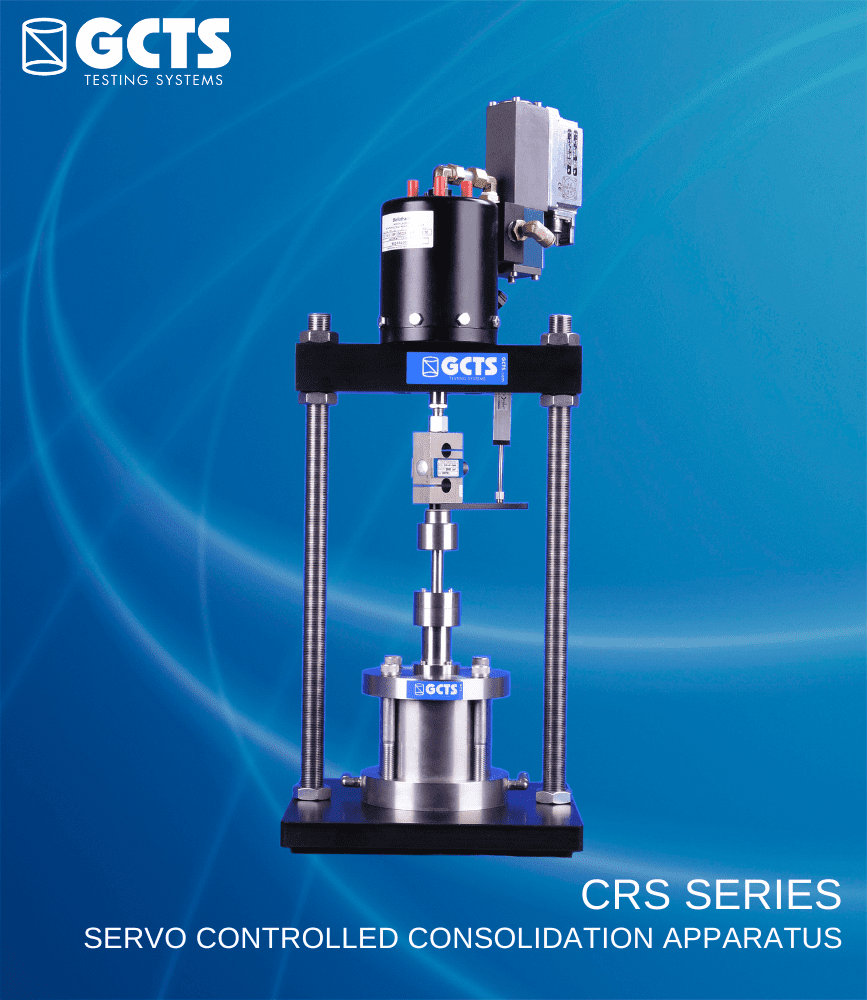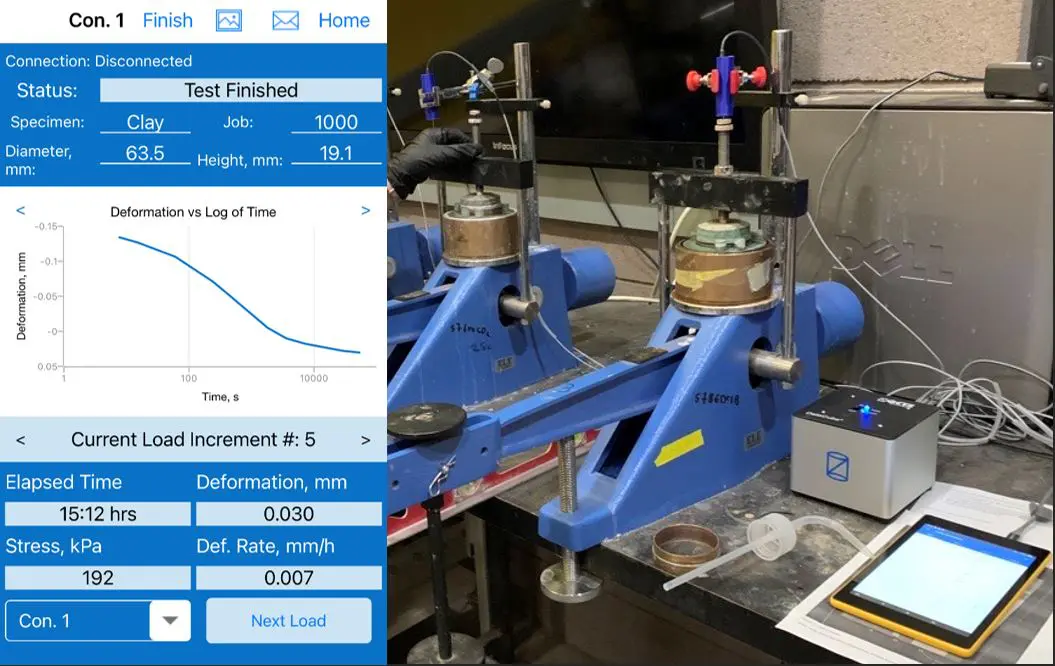Consolidation Test
GCTS provides two solutions for automated consolidation measurements: a complete system and an upgrade for manual cells.
The GCTS Consolidation Apparatus (CRS-10) performs Controlled Gradient (CG), Constant Rate of Strain (CRS), and Incremental consolidation tests. It includes a servo-controlled loading frame, deformation sensor, load cell, stainless steel consolidation cell, pore pressure sensor, specimen ring, porous stones, o-ring seals, and necessary plumbing. The SCON-S Servo Controller and Data Acquisition Unit manage and monitor tests in real-time with provided software.
The CG test uses a pore pressure transducer for preset loading rates, while the CRS test uses a deformation sensor to control the strain rate. Incremental tests apply axial loads in preset steps. Optional accessories like the PCP-100 Pressure Panel enable falling and constant head permeability tests, with fluid flow measured via graded tubes and optional volume change sensors.
The CRS-10 system can be upgraded to a full triaxial system and customized for larger specimens or loads. Other options include volume change devices, bender elements, and HAEV ceramic disks.
The DataCube is available to upgrade existing systems, allowing up to four consolidation cells to be instrumented, with data automatically recorded and easily viewed for incremental loading. Data can be emailed for further analysis.
CRS-10
HIGHLIGHTS
- Electro-pneumatic servo control
- 10 kN axial load capacity
- Performs Constant Rate of Strain (CSR), Constant Gradient (CG), and conventional Consolidation Tests
- Automated data collection and report generation
- Custom cells for various specimen sizes
Consolidation App
DESCRIPTION
The soil consolidation apparatus (consolidometer) used to perform the oedometer test is a quintessential laboratory device for any geotechnical testing laboratory and has largely stayed unchanged since its introduction. GCTS has developed a simple data acquisition unit with an app to bring the consolidometer apparatus into the digital age. The DataCube unit with a deformation sensor can monitor and record the specimen deformation after the load has been applied, eliminating the need for the manual recording. The consolidation app saves and plots the data which can be emailed with a touch of a button.
How does it work?
The analog dial gage on the consolidometer is replaced by a DC type deformation sensor which is then connected to the DataCube unit. One DataCube can accommodate up to four (4) deformation sensors, so a single unit can upgrade up to four (4) consolidometers. The consolidation app on a wireless device (Android, iOS, or Windows) is connected to the DataCube via BluetoothTM to begin recording the data. After each load increment is applied the app records and processes the data. The sample test results file is shown on the following page.






